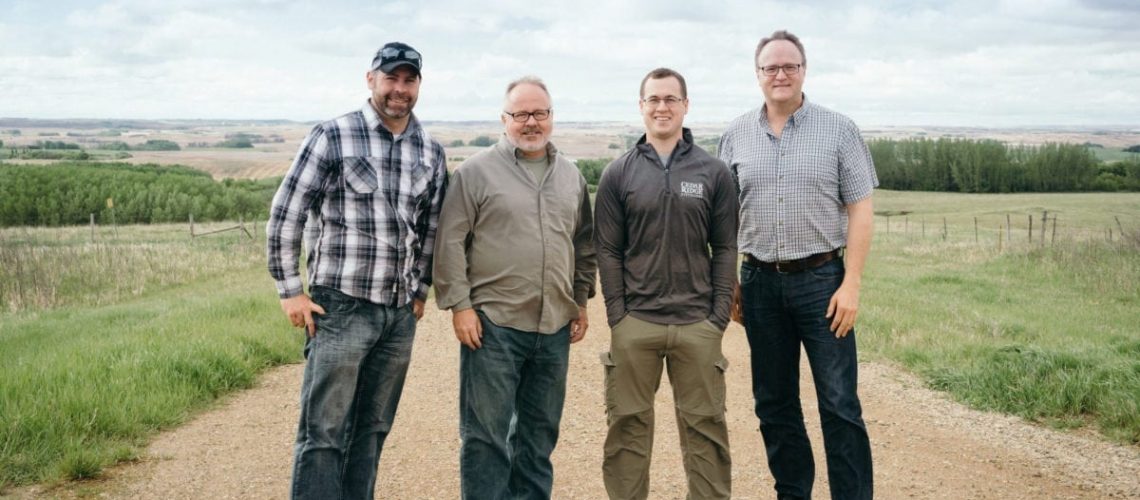We have a deep appreciation for the culinary arts at Cedar Ridge. With SIX certified chefs on staff, we understand that it takes quality ingredients to create a quality product. This understanding is not limited to our kitchen or the amazing people that work in it. It is equally as important that our production team operates on a “quality in, quality out” policy. After all, in order to make the best whiskey, you need to start with the best grain. So when our malted grain supplier, Cargill, presented us with the opportunity to visit their Prairie Malt facility in Biggar, Saskatchewan, we were quick to accept their invitation.
(Before we upset a bunch of Iowans, we should mention that Cedar Ridge does grow its own corn. Relax. But when it comes to the other grains we work with, such as barley, rye and wheat, we need a consistent, quality supplier. Enter Cargill.)
Speaking of Iowa, the landscapes of Saskatchewan (at least the ones we saw) were surprisingly similar to those of Iowa. Slightly flatter than our rolling hills, but the distinct horizon lines laid the floor for big, beautiful skies. As we arrived in the small town of Biggar, we were greeted by the town welcome sign, sporting the slogan “New York is big, but this is Biggar.” Good stuff! We took turns making Biggar puns of our own until the Prairie Malt facility was finally in our sights. It was massive.
The tour of their malting operation was incredible. Their malting floors produce 300,000 metric tons each year! That’s over one million bushels of malted grain per month. Mostly barley, along with small amounts of wheat and rye, which is malted specially for us. Most of their malted barley is shipped outside of North America.
They use two different types of malting floors. One system slowly conveys across long floors where fresh steeped grain enters one end and is finished malt at the other end, four days later. The other system drops batches of grain on its floors where it is stirred for four days. Under either system, the wet malt is then dried down to about 4% moisture before being stored in silos. It was very apparent that their methods are extremely scientific and require a lot of hard work.
After the tour, we sampled some Cedar Ridge whiskeys with the Prairie Malt staff. It was fun to watch them experience the final product, produced from the grain they had spent so much time working with. It was the perfect way to end the perfect trip. We gained quite the education, as well as many new friends along the way. In addition, we were able to check an item off the ole bucket list: to see a large scale malting operation. We had seen small malting operations in the past, but this was Biggar.
Cheers!

